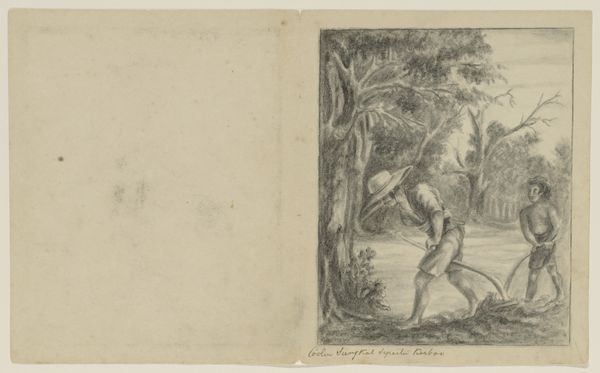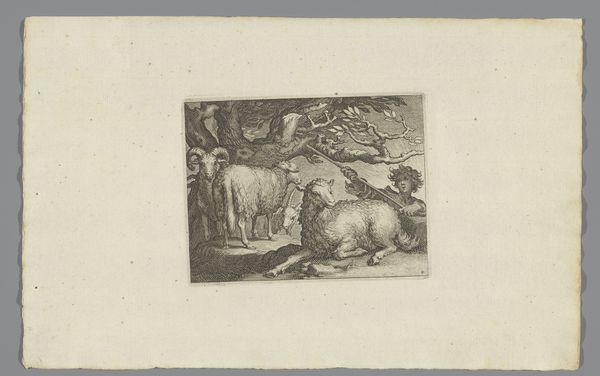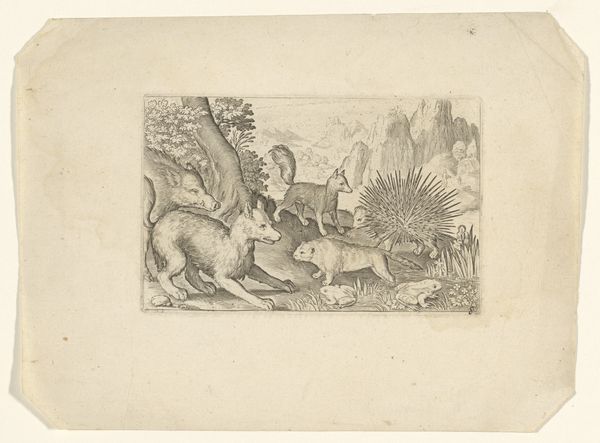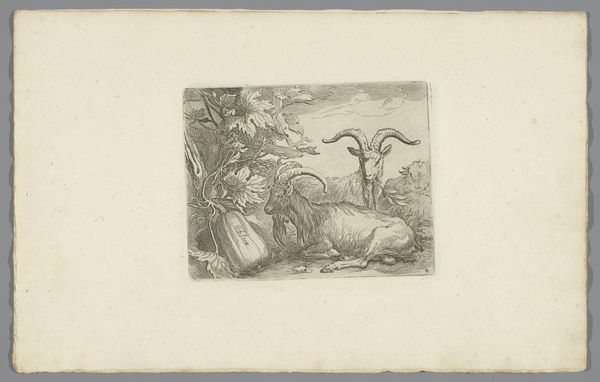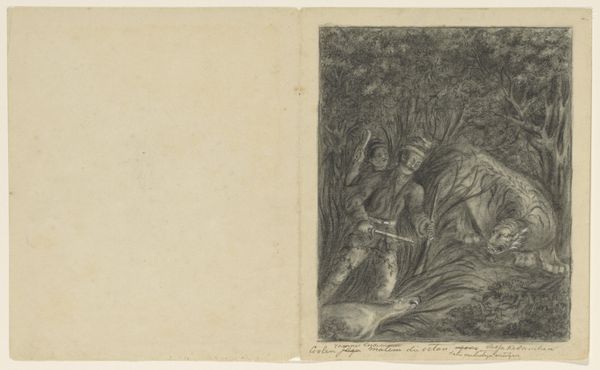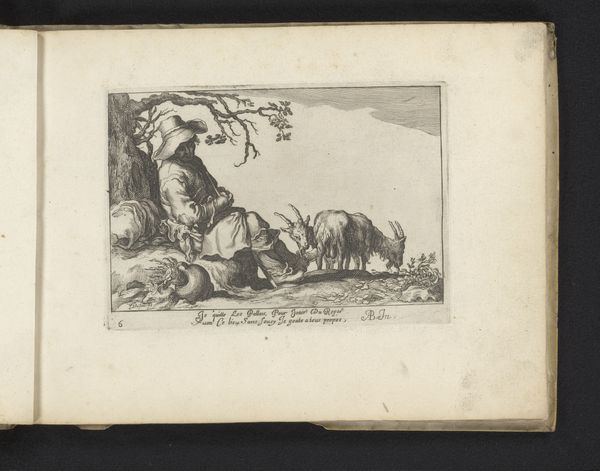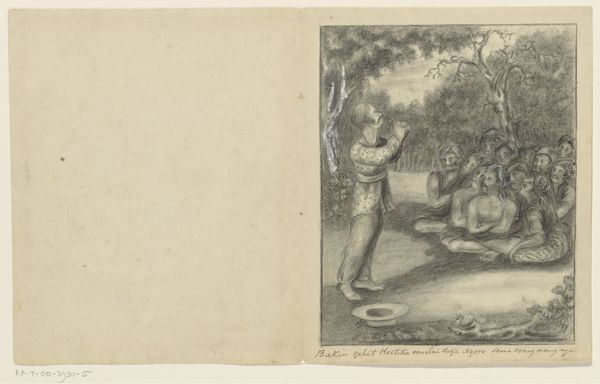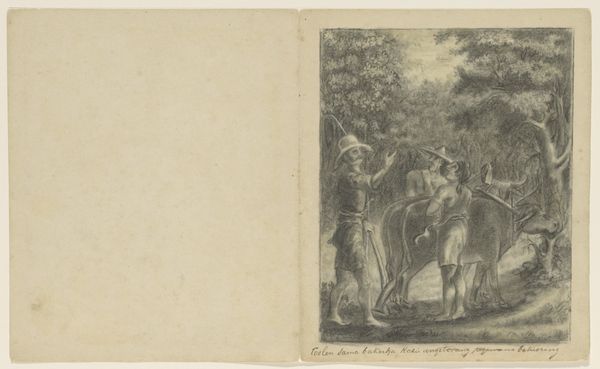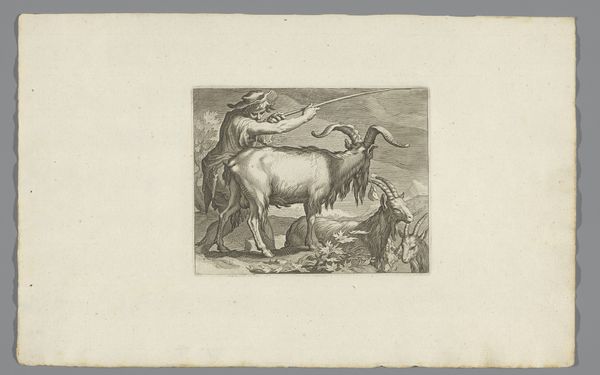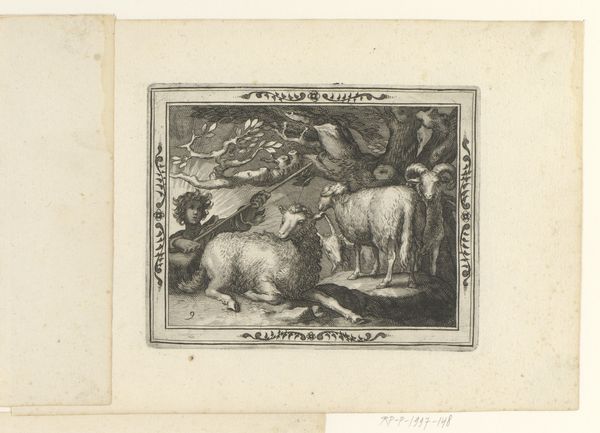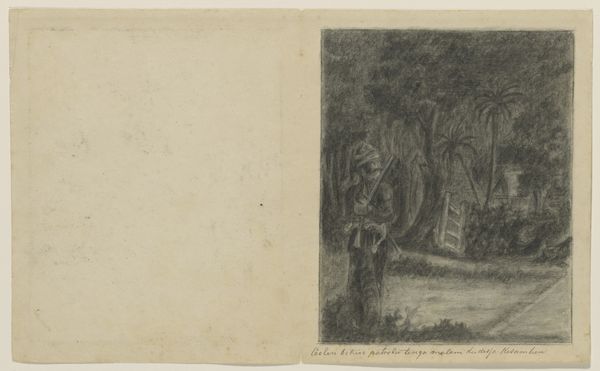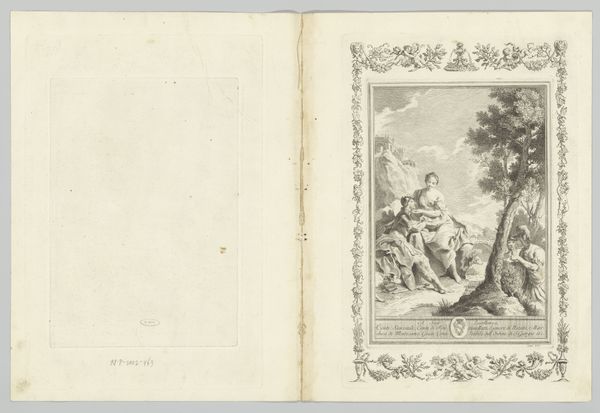
drawing, paper, pencil
#
drawing
#
pencil sketch
#
landscape
#
figuration
#
paper
#
pencil
#
realism
Dimensions: height 203 mm, width 168 mm
Copyright: Rijks Museum: Open Domain
Curator: Let’s discuss this pencil drawing, titled “Coolen draagt een mand met eenden,” created by an anonymous artist sometime between 1820 and 1850. It’s rendered on paper with exquisite detail. Editor: It evokes such a tranquil, almost somber mood. The heavy use of charcoal gives a very strong tonal variation across the image and a sense of gravity and the somberness of daily labor. Curator: I think this artwork is evocative of the kind of labor arrangements common in the 19th-century colonial context. We have an indigenous farmer shown from a European perspective tilling fields with draft animals—note the yoke connecting them, also he carries a cage of fowl, probably destined to the market. It offers a lens to understand the complexities and social inequalities of the era. Editor: The composition reinforces that sense of imposed constraint. The man is hemmed in—the dense foliage above, and then below, by those sturdy, almost immoveable oxen pulling a primitive plough. Curator: I am interested in the interplay of observation and documentation that comes to us anonymously and is made available for museum goers of future eras, an attempt, whether or not explicitly articulated, to document an environment that could be threatened. What does it communicate through the context of today? Editor: It feels a little detached and quite observational. It’s not the most dynamic composition and feels quite still, reflecting a studied gaze that does not seem deeply embedded with the realities of that life, despite portraying what, one might argue, could represent realism. It doesn’t celebrate the everyday. It almost abstracts the reality. Curator: What it tells us about representation and what that says about the nature of historical power, is interesting and a vital contribution from artists of the era who have remained anonymous. It is invaluable for this and gives cause for more analysis. Editor: I find it deeply beautiful with the depth of the tonal scale. It is powerful to see such close gradations from darkest shadows into brilliant highlights, really holding my attention within its planes. Curator: I agree. A work like this serves as a mirror, reflecting not only a past landscape, but also the biases and perspectives that shaped its creation. Editor: A somber reflection captured through subtle nuances of tone and composition, open for each of us to individually encounter, whether critically or artistically.
Comments
No comments
Be the first to comment and join the conversation on the ultimate creative platform.
